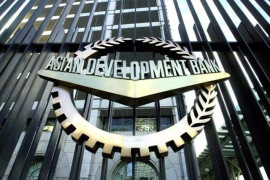
The city district government has the potential to collect Rs9.1 billion per annum in commercialisation fees, a survey by the District Office of Special Planning (DOSP) has revealed.
According to the survey held recently, there are 17,493 commercial properties on 117 roads where city government is allowing commercialisation. The survey taken under Rule 67(4) of the Punjab Land Use Rules includes a photograph and a profile of each property.
The survey report says there are 1,436 properties on five roads in Allama Iqbal Town from where Rs4.6 billion can be collected. The second highest amount can come from Ravi Town. Rs1.5 billion can be collected from 1,582 commercial properties on nine roads of this town. The third highest amount Rs 1.31 – can be collected from 5,531 commercial properties on 30 roads in Samanabad Town. Rs1.049232107 billion from 3,015 properties on 18 roads in Shalimar Town; Rs530.9988650 million from 1,162 properties on four roads in Wagha Town; Rs250.511,985 million from 2,508 properties on 26 roads in Data Ganj Bakhsh Town; Rs170 million from 686 properties on 11 roads in Gulberg Town; Rs80 million from 1,297 properties on 11 roads in Aziz Bhatti Town and Rs10 million from 276 properties on three roads in Nishter Town can be collected.
A CDGL official said new legislation was needed before the property owners could be forced to pay.
He said the office had sealed some 20 properties on the Kala Khatai road last year for non-payment of commercialisation fees. When the businessmen moved the Lahore High Court against the sealing of their properties. Justice Amin Khan ordered the city government not to seal the businesses.

The official said that in view of the de-sealing of the properties by the LHC, the CDGL may lack an effective coercive tool to collect the commercialisation fee. Following the court verdict, the CDGL was focusing on the 2012-13 target of Rs500 million only.
He also said the office lacked adequate manpower as it was working only with four inspectors and two deputy district officers.
EDO (Municipal Services) Masud Ahmad Tamanna said that under the Local Government Ordinance non-payment cases are referred to the collector who can under Land Revenue Act 1976 initiate legal action.
However, so far no cases have been referred to the collector.
The District Planning and Design Committee has approved 30 more roads for commercialisation after the survey. The proposal to levy the fees on these roads is awaiting the approval of the local government secretary.
The 147 roads under the CDGL control are divided in three categories neighborhood roads (up to 50 feet), district centre roads (50-100 feet wide) and major centre roads (100 feet wide or wider). Thirty out of the 147 roads are already commercial.
District Officer (Special Planning) Umme Laila Naqvi said the survey would help the CDGL generate more revenue from commercial properties. She said that a demand and collection register for commercialisation fees would be maintained to monitor defaulters and collectors. However, she also said they did not have enough manpower to back a large collection campaign. She said that the District Office of Special Planning would likely collect the conversion fees from all properties identified in the survey in two years.
Published in The Express Tribune, January 11th, 2013.







1732012115-0/Untitled-design-(14)1732012115-0-270x192.webp)









COMMENTS
Comments are moderated and generally will be posted if they are on-topic and not abusive.
For more information, please see our Comments FAQ